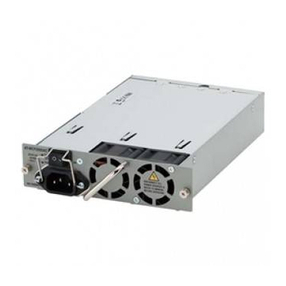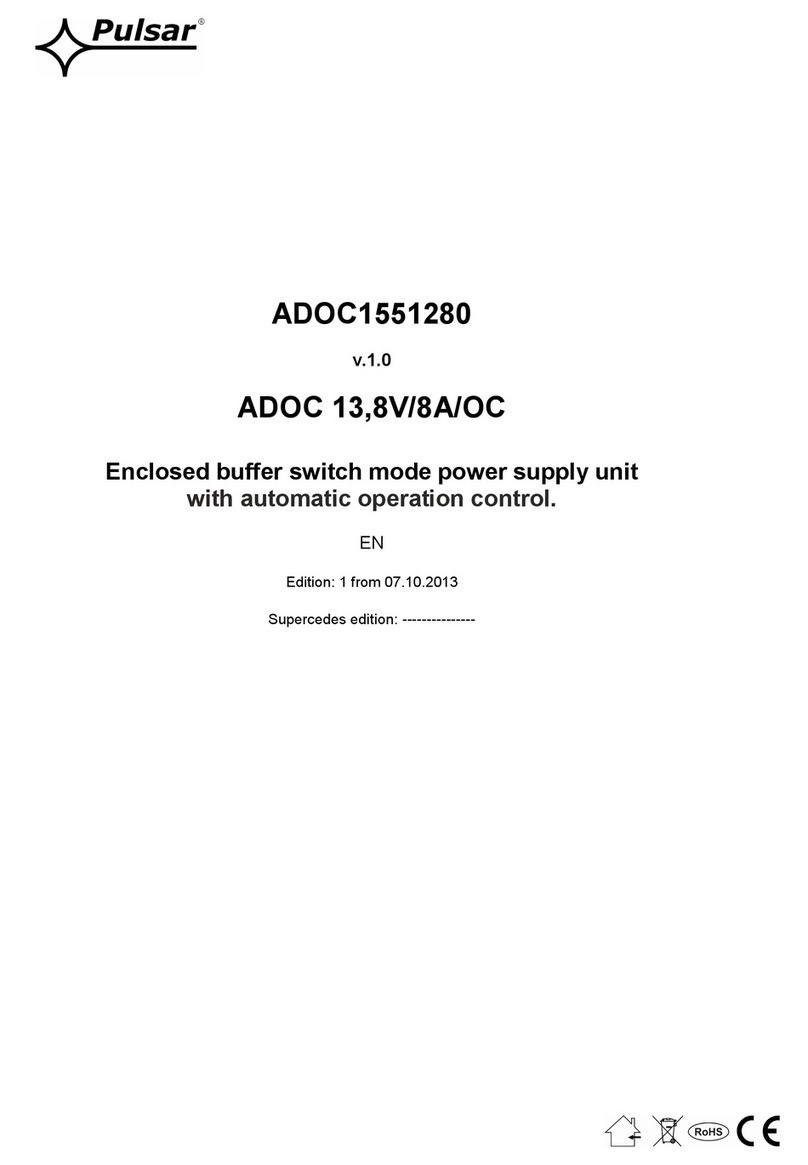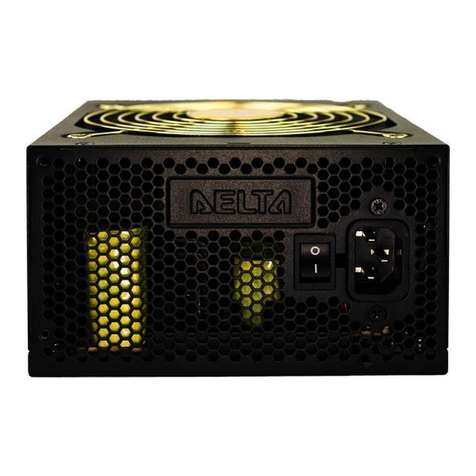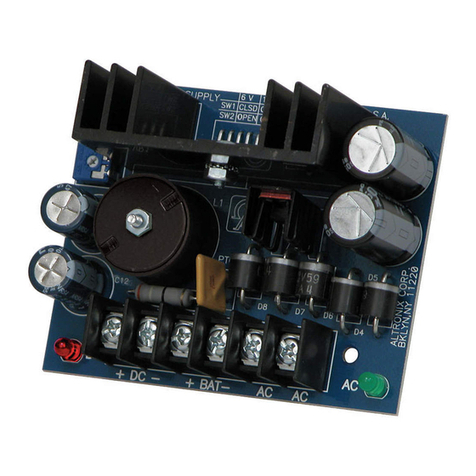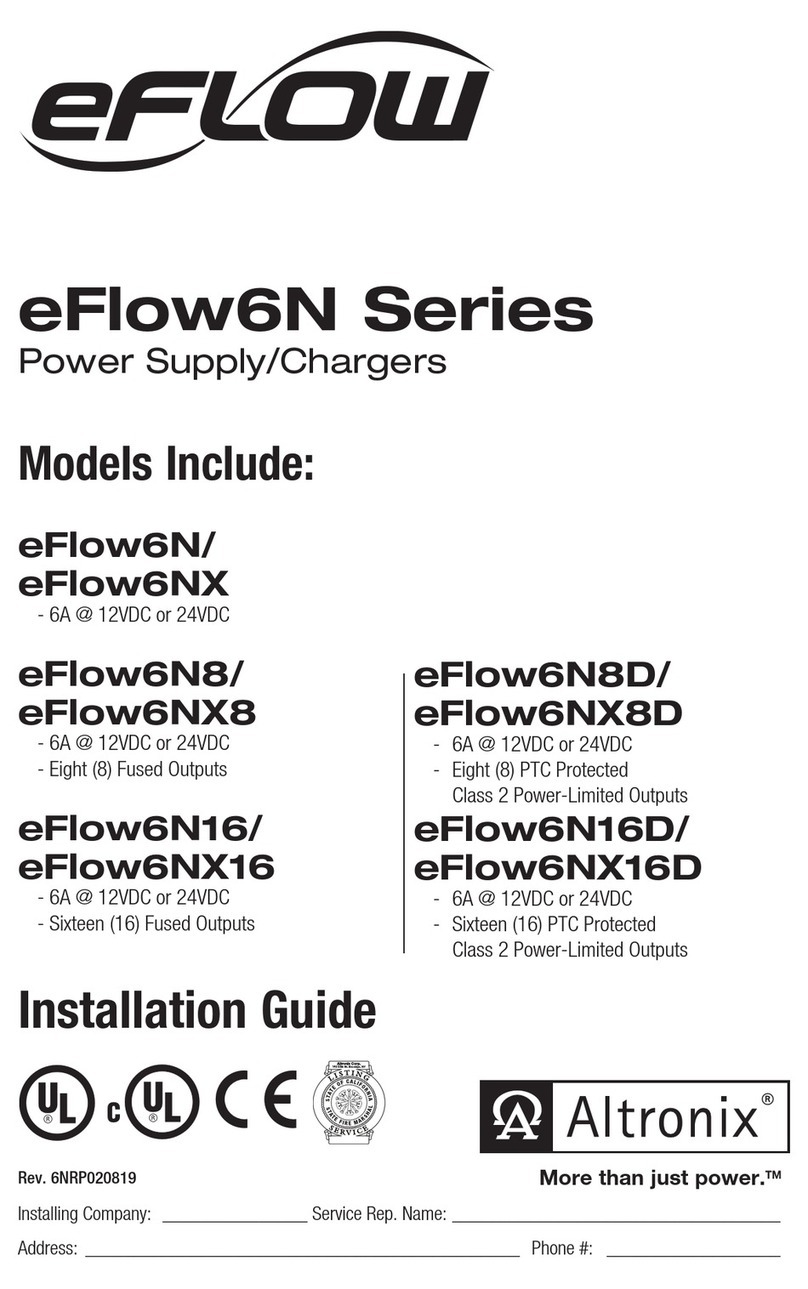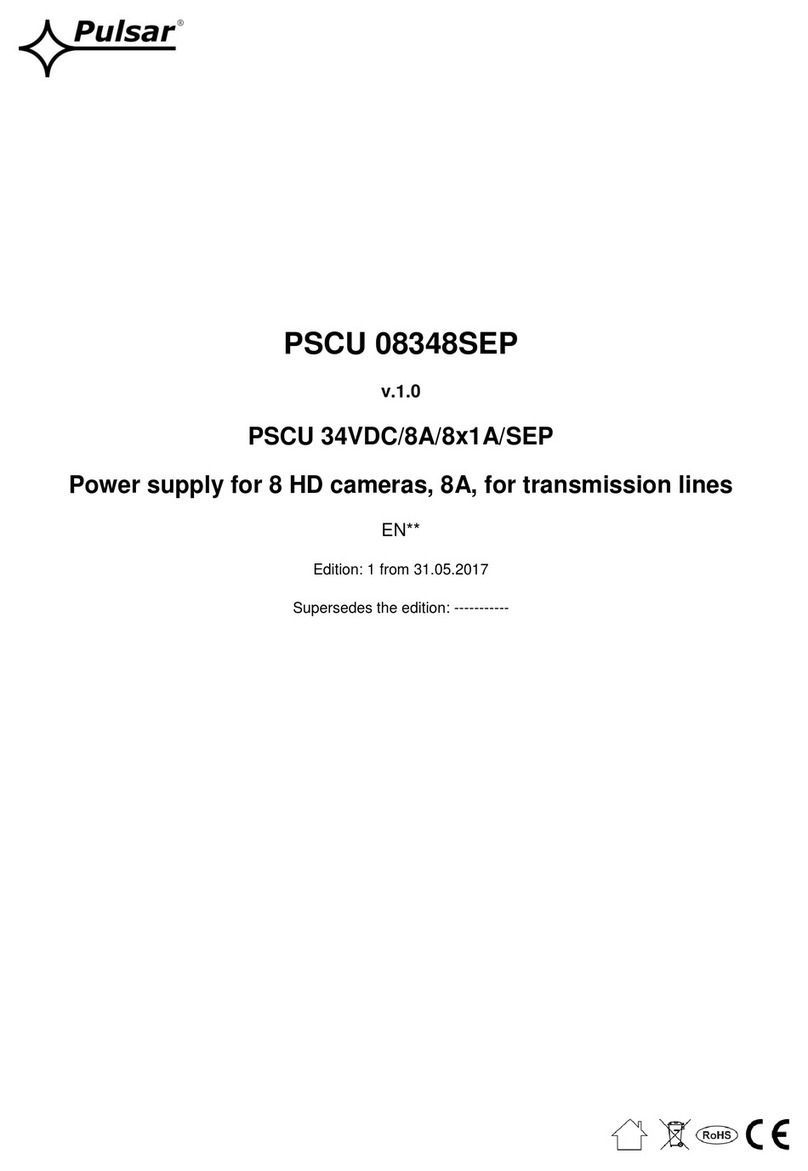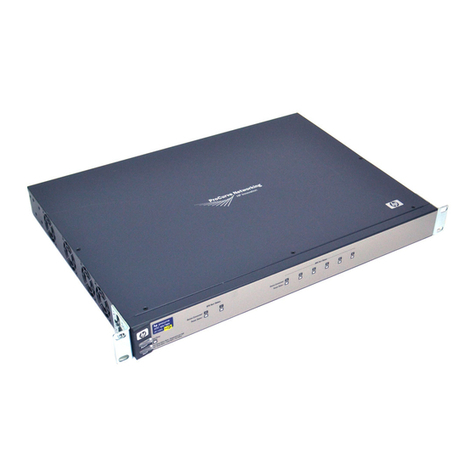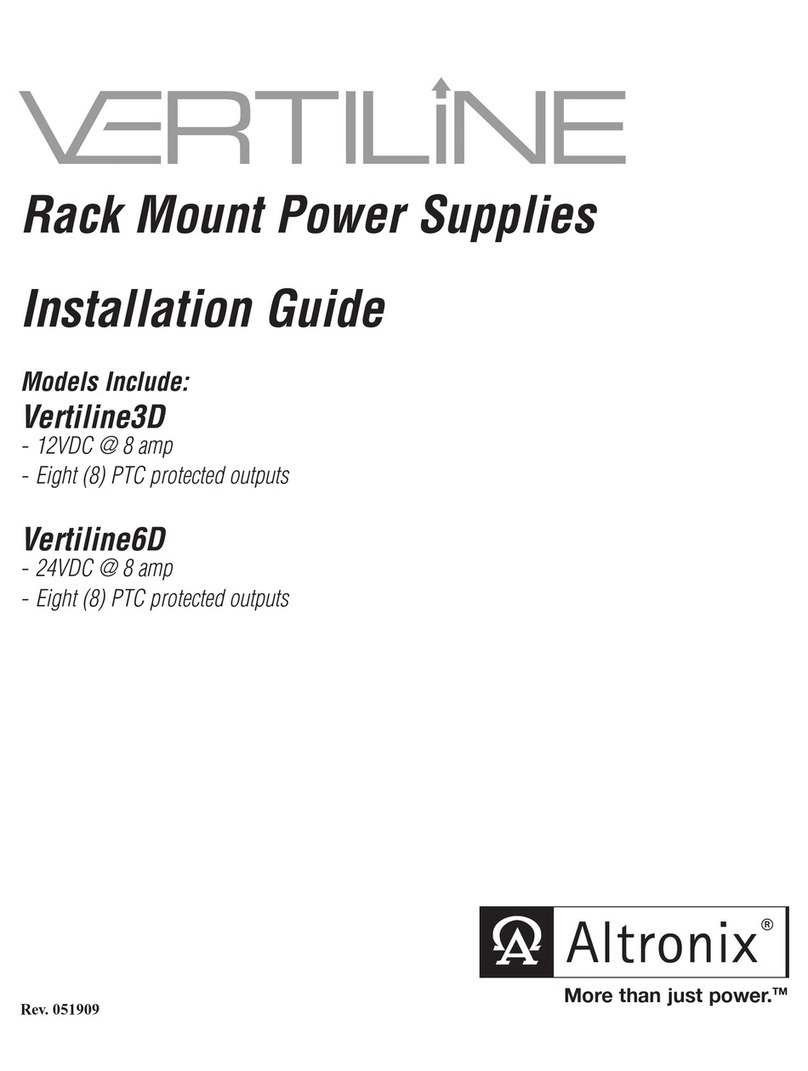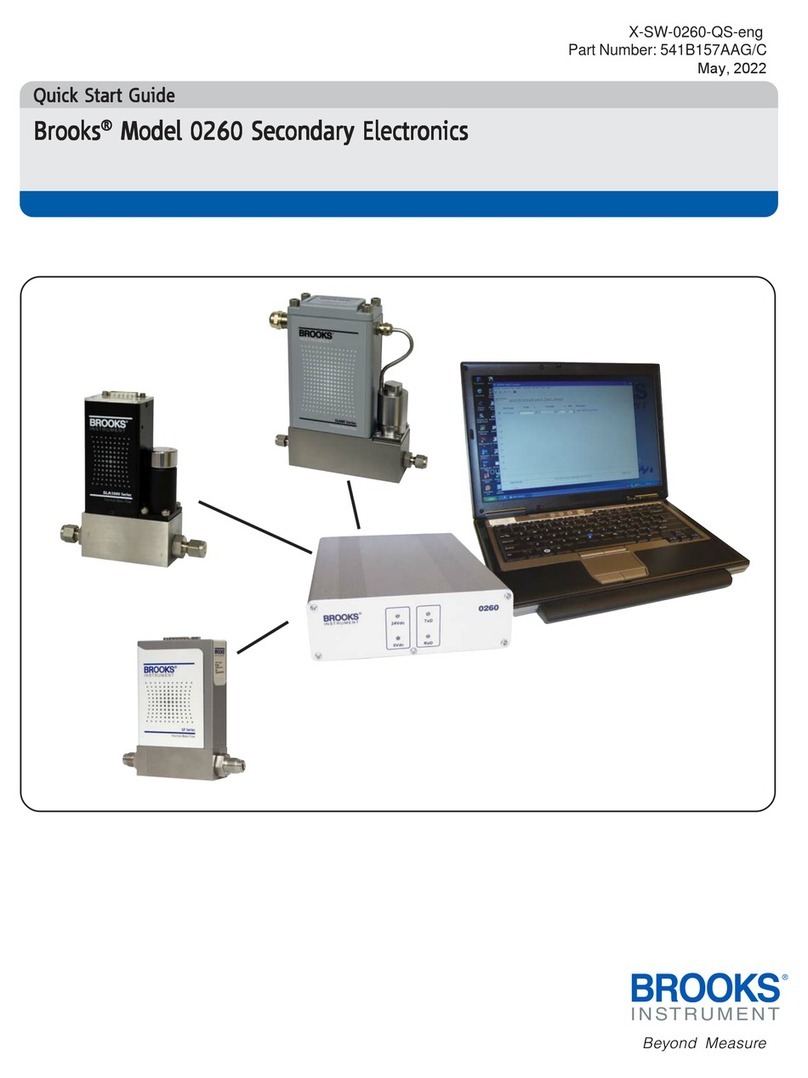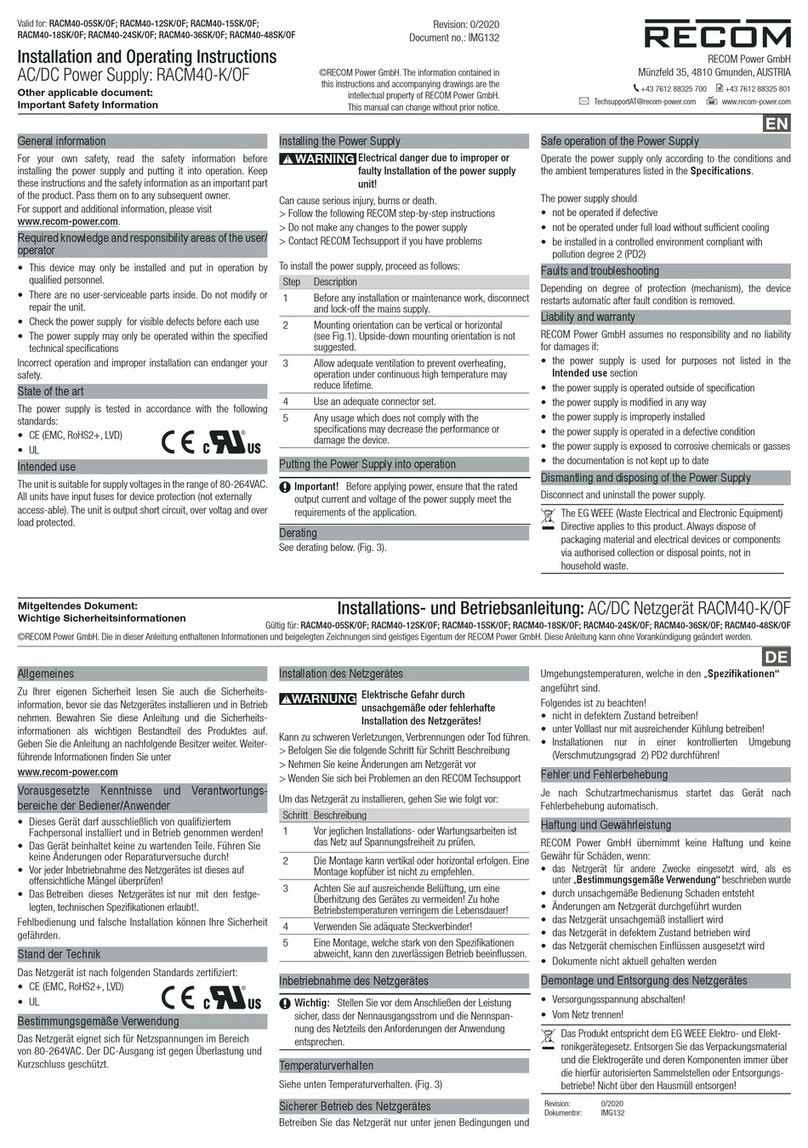Solar Stik PRO-Verter S 2000 AGS Manual instruction

|1June 2020 |Solar Stik®, Inc. PRELIMINARY DRAFT
SYSTEM SETUP AND OPERATION GUIDE
FOR THE
1kW HYBRID POWER SYSTEM (HPS)
Version 1.0
Updated:20200611
DISTRIBUTION STATEMENT A. Approved for public release; distribution is unlimited.

June 2020 |Solar Stik®, Inc.2 |
SYSTEM SETUP AND OPERATION GUDIE FOR THE 1 kW HYBRID POWER SYSTEM (HPS)
PRELIMINARY DRAFT
Contents
GENERAL INFORMATION, EQUIPMENT DESCRIPTION, AND THEORY OF OPERATION
Introduction to Hybrid Power Systems . . . . . . . . . . . . . . . . . . . . . . . . . . . . . . . . . . . . . . 7
The HPS Flexible Open Architecture . . . . . . . . . . . . . . . . . . . . . . . . . . . . . . . . . . . . . . . .7
Important Safety Information and Instructions . . . . . . . . . . . . . . . . . . . . . . . . . . . . . . . . . . 8
Safety Information Labels . . . . . . . . . . . . . . . . . . . . . . . . . . . . . . . . . . . . . . . . . . . . . 8
Fire Hazard . . . . . . . . . . . . . . . . . . . . . . . . . . . . . . . . . . . . . . . . . . . . . . . . . . . . 9
Recommended Fire Extinguisher . . . . . . . . . . . . . . . . . . . . . . . . . . . . . . . . . . . . . . . . . 9
Electric Shock Hazard. . . . . . . . . . . . . . . . . . . . . . . . . . . . . . . . . . . . . . . . . . . . . . 10
Grounding a PRO-Verter . . . . . . . . . . . . . . . . . . . . . . . . . . . . . . . . . . . . . . . . . . . . 10
Environmental and Handling Precautions . . . . . . . . . . . . . . . . . . . . . . . . . . . . . . . . . . . . 11
Wind . . . . . . . . . . . . . . . . . . . . . . . . . . . . . . . . . . . . . . . . . . . . . . . . . . . . . . . 11
Water . . . . . . . . . . . . . . . . . . . . . . . . . . . . . . . . . . . . . . . . . . . . . . . . . . . . . . 11
Impact . . . . . . . . . . . . . . . . . . . . . . . . . . . . . . . . . . . . . . . . . . . . . . . . . . . . . . 11
Dust/Foreign Object Intrusion . . . . . . . . . . . . . . . . . . . . . . . . . . . . . . . . . . . . . . . . . . 11
Heat . . . . . . . . . . . . . . . . . . . . . . . . . . . . . . . . . . . . . . . . . . . . . . . . . . . . . . . 11
Theory of Operation
Models of Operation . . . . . . . . . . . . . . . . . . . . . . . . . . . . . . . . . . . . . . . . . . . . . . . . 12
DC-only/Inverter (automatic functions) . . . . . . . . . . . . . . . . . . . . . . . . . . . . . . . . . . . . . 12
Hybrid (automatic functions) . . . . . . . . . . . . . . . . . . . . . . . . . . . . . . . . . . . . . . . . . . 12
Load Support (automatic functions). . . . . . . . . . . . . . . . . . . . . . . . . . . . . . . . . . . . . . . 12
UPS (automatic functions). . . . . . . . . . . . . . . . . . . . . . . . . . . . . . . . . . . . . . . . . . . . 12
Selecting a Generator/Grid AC Source . . . . . . . . . . . . . . . . . . . . . . . . . . . . . . . . . . . . . 13
The Hybrid Model . . . . . . . . . . . . . . . . . . . . . . . . . . . . . . . . . . . . . . . . . . . . . . . . 13
The Load Support Model . . . . . . . . . . . . . . . . . . . . . . . . . . . . . . . . . . . . . . . . . . . . 13
The Peak Power Delivery Model . . . . . . . . . . . . . . . . . . . . . . . . . . . . . . . . . . . . . . . . 13
Energy Storage Requirements for Operation . . . . . . . . . . . . . . . . . . . . . . . . . . . . . . . . . . 14
DC Voltage: Master Metric . . . . . . . . . . . . . . . . . . . . . . . . . . . . . . . . . . . . . . . . . . . . 14
PRO-Verter Circuits and Functions. . . . . . . . . . . . . . . . . . . . . . . . . . . . . . . . . . . . . . . . 15
Load Prioritization . . . . . . . . . . . . . . . . . . . . . . . . . . . . . . . . . . . . . . . . . . . . . . . . . 16
Real-time Load Management . . . . . . . . . . . . . . . . . . . . . . . . . . . . . . . . . . . . . . . . . . . 16
“Pass-through” Power and the Internal AC Transfer Switch . . . . . . . . . . . . . . . . . . . . . . . . . . 17
Qualifying AC Input Power . . . . . . . . . . . . . . . . . . . . . . . . . . . . . . . . . . . . . . . . . . . 18
Charge Function . . . . . . . . . . . . . . . . . . . . . . . . . . . . . . . . . . . . . . . . . . . . . . . . . 18
Invert Function. . . . . . . . . . . . . . . . . . . . . . . . . . . . . . . . . . . . . . . . . . . . . . . . . . 18
Transfer of Loads From Grid / Generator Input to Inverter (Batteries) . . . . . . . . . . . . . . . . . . . . . 19
Transfer of Loads From Inverter (Batteries) to Grid / Generator. . . . . . . . . . . . . . . . . . . . . . . . . 19
PV Charging Management . . . . . . . . . . . . . . . . . . . . . . . . . . . . . . . . . . . . . . . . . . . . 19
Automatic Generator Start/Stop (AGS) Function . . . . . . . . . . . . . . . . . . . . . . . . . . . . . . . . 20
AGS Audible Alarm . . . . . . . . . . . . . . . . . . . . . . . . . . . . . . . . . . . . . . . . . . . . . . . . . 20
Soft Start . . . . . . . . . . . . . . . . . . . . . . . . . . . . . . . . . . . . . . . . . . . . . . . . . . . . . . 20
Cooling Fan Operation. . . . . . . . . . . . . . . . . . . . . . . . . . . . . . . . . . . . . . . . . . . . . . . 20
Protection Circuits . . . . . . . . . . . . . . . . . . . . . . . . . . . . . . . . . . . . . . . . . . . . . . . . . 20
Derating. . . . . . . . . . . . . . . . . . . . . . . . . . . . . . . . . . . . . . . . . . . . . . . . . . . . . . . 21
Dead-battery System Recovery Circuits. . . . . . . . . . . . . . . . . . . . . . . . . . . . . . . . . . . . . 21
Historical Data and Fault Tracking . . . . . . . . . . . . . . . . . . . . . . . . . . . . . . . . . . . . . . . . 21

|3June 2020 |Solar Stik®, Inc.
SYSTEM SETUP AND OPERATION GUDIE FOR THE 1 kW HYBRID POWER SYSTEM (HPS)
PRELIMINARY DRAFT
Circuit Limitations . . . . . . . . . . . . . . . . . . . . . . . . . . . . . . . . . . . . . . . . . . . . . . . . . 21
Equipment Description
The Inter-Connect System . . . . . . . . . . . . . . . . . . . . . . . . . . . . . . . . . . . . . . . . . . . . 22
24VDC Standard Inter-Connect Plug . . . . . . . . . . . . . . . . . . . . . . . . . . . . . . . . . . . . . . 23
24VDC Linear Inter-Connect Cable . . . . . . . . . . . . . . . . . . . . . . . . . . . . . . . . . . . . . . . 23
1kW HPS Kit . . . . . . . . . . . . . . . . . . . . . . . . . . . . . . . . . . . . . . . . . . . . . . . . . . . . 24
24VDC Li Expander Pak 1300 Description . . . . . . . . . . . . . . . . . . . . . . . . . . . . . . . . . . . . 25
External Features . . . . . . . . . . . . . . . . . . . . . . . . . . . . . . . . . . . . . . . . . . . . . . . . 25
24VDC Li Expander Pak 1300 Data Plate (D-Plate) . . . . . . . . . . . . . . . . . . . . . . . . . . . . . . . 26
Solar Venture 300W Kit Description . . . . . . . . . . . . . . . . . . . . . . . . . . . . . . . . . . . . . . . 27
Kit Components . . . . . . . . . . . . . . . . . . . . . . . . . . . . . . . . . . . . . . . . . . . . . . . . . 27
PRO-Verter S 2000 AGS Description . . . . . . . . . . . . . . . . . . . . . . . . . . . . . . . . . . . . . . . 28
PRO-Verter Connection Ports and Vents . . . . . . . . . . . . . . . . . . . . . . . . . . . . . . . . . . . . 28
PRO-Verter Faceplate . . . . . . . . . . . . . . . . . . . . . . . . . . . . . . . . . . . . . . . . . . . . . . 30
PRO-Verter I-Plate. . . . . . . . . . . . . . . . . . . . . . . . . . . . . . . . . . . . . . . . . . . . . . . . 32
OPERATOR INSTRUCTIONS
1. Minimize Potential for Water and Dust Intrusion . . . . . . . . . . . . . . . . . . . . . . . . . . . . . . . 33
2. System Connection Diagram and Parts List . . . . . . . . . . . . . . . . . . . . . . . . . . . . . . . . . 33
a. Connect PRO-Verter to Energy Storage Modules . . . . . . . . . . . . . . . . . . . . . . . . . . . . . . 34
b. Connect PRO-Verter to AC Power Source . . . . . . . . . . . . . . . . . . . . . . . . . . . . . . . . . . 35
Compatible Generator Options . . . . . . . . . . . . . . . . . . . . . . . . . . . . . . . . . . . . . . . 35
c. Connect PRO-Verter to a Generator . . . . . . . . . . . . . . . . . . . . . . . . . . . . . . . . . . . . . 36
Defender 1 kW and Ranger 2 kW MPGs . . . . . . . . . . . . . . . . . . . . . . . . . . . . . . . . . . 36
d. Connect PV Array(s) to PRO-Verter. . . . . . . . . . . . . . . . . . . . . . . . . . . . . . . . . . . . . . 37
e. Secure the Array to the Ground. . . . . . . . . . . . . . . . . . . . . . . . . . . . . . . . . . . . . . . . 38
f. Connect PRO-Verter to 120 VAC Loads . . . . . . . . . . . . . . . . . . . . . . . . . . . . . . . . . . . 39
g. Set PRO-Verter 24-hour clock (TIME SETTING). . . . . . . . . . . . . . . . . . . . . . . . . . . . . . . . 40
h. How to Set GRID MAX CURRENT equal to connected generator or grid output current. . . . . . . . . . . 41
i. Starting the MPG with PRO-Verter . . . . . . . . . . . . . . . . . . . . . . . . . . . . . . . . . . . . . . 42
Operating the PRO-Verter User Interface . . . . . . . . . . . . . . . . . . . . . . . . . . . . . . . . . . . . 43
PRO-Verter Status and Alarm LEDs . . . . . . . . . . . . . . . . . . . . . . . . . . . . . . . . . . . . . . . 44
PRO-Verter Operating Modes. . . . . . . . . . . . . . . . . . . . . . . . . . . . . . . . . . . . . . . . . . . 45
Operation Mode Screens . . . . . . . . . . . . . . . . . . . . . . . . . . . . . . . . . . . . . . . . . . . . 46
PRO-Verter Programmable Settings . . . . . . . . . . . . . . . . . . . . . . . . . . . . . . . . . . . . . . . 47
Navigating “Select Group” and “Select Parameter” Menu Maps . . . . . . . . . . . . . . . . . . . . . . . 47
Parameter Groups: PRO-Verter Programmable Settings . . . . . . . . . . . . . . . . . . . . . . . . . . . . 48
Charge Curve Programmable Settings . . . . . . . . . . . . . . . . . . . . . . . . . . . . . . . . . . . . . 49
Input Setting Programmable Settings . . . . . . . . . . . . . . . . . . . . . . . . . . . . . . . . . . . . . . 50
Input Low Limit Programmable Settings . . . . . . . . . . . . . . . . . . . . . . . . . . . . . . . . . . . . 51
Input High Limit Programmable Settings . . . . . . . . . . . . . . . . . . . . . . . . . . . . . . . . . . . . 51
Other Functions Programmable Settings . . . . . . . . . . . . . . . . . . . . . . . . . . . . . . . . . . . . 52
PRO-Verter Clock Time Setting . . . . . . . . . . . . . . . . . . . . . . . . . . . . . . . . . . . . . . . . . 52
Stop SD Card Command . . . . . . . . . . . . . . . . . . . . . . . . . . . . . . . . . . . . . . . . . . . . 52
Saving/Uploading Programmed Parameters . . . . . . . . . . . . . . . . . . . . . . . . . . . . . . . . . . 53
Saving Programmed PRO-Verter Parameters to SD Card . . . . . . . . . . . . . . . . . . . . . . . . . . . 53
Uploading Saved PRO-Verter Parameters from SD Card . . . . . . . . . . . . . . . . . . . . . . . . . . . . 53
PRO-Verter S 2000 Data Logging . . . . . . . . . . . . . . . . . . . . . . . . . . . . . . . . . . . . . . . . . 54

June 2020 |Solar Stik®, Inc.4 |
SYSTEM SETUP AND OPERATION GUDIE FOR THE 1 kW HYBRID POWER SYSTEM (HPS)
PRELIMINARY DRAFT
Data Log Files: Viewing Data Log Files Using Excel . . . . . . . . . . . . . . . . . . . . . . . . . . . . 54
System Runtime Scenarios . . . . . . . . . . . . . . . . . . . . . . . . . . . . . . . . . . . . . . . . . . . . 57
Generator only. . . . . . . . . . . . . . . . . . . . . . . . . . . . . . . . . . . . . . . . . . . . . . . . . . 57
PV only . . . . . . . . . . . . . . . . . . . . . . . . . . . . . . . . . . . . . . . . . . . . . . . . . . . . . 58
Generator and PV Input . . . . . . . . . . . . . . . . . . . . . . . . . . . . . . . . . . . . . . . . . . . . . 59
TROUBLESHOOTING PROCEDURES
Clearing PRO-Verter Faults . . . . . . . . . . . . . . . . . . . . . . . . . . . . . . . . . . . . . . . . . . . . 60
Recovery of System with Overdischarged Batteries . . . . . . . . . . . . . . . . . . . . . . . . . . . . . . 60
Clearing Generator Faults Faults . . . . . . . . . . . . . . . . . . . . . . . . . . . . . . . . . . . . . . . . . 60
Measuring PV Array Voltages . . . . . . . . . . . . . . . . . . . . . . . . . . . . . . . . . . . . . . . . . . . 61
Procedure to Measure PV Array Voc with a Multimeter . . . . . . . . . . . . . . . . . . . . . . . . . . . . . 61
PRO-Verter Fault Messages and Troubleshooting Guides . . . . . . . . . . . . . . . . . . . . . . . . . . . 62
MAINTENANCE, SECURITY, AND TRANSPORT
24VDC PRO-Verter S 2000 PMCS . . . . . . . . . . . . . . . . . . . . . . . . . . . . . . . . . . . . . . . . . 66
PRO-Verter Filter Removal and Cleaning or Replacement . . . . . . . . . . . . . . . . . . . . . . . . . . . 66
Preventive Maintenance Checks and Services (PMCS) . . . . . . . . . . . . . . . . . . . . . . . . . . . . 68
In-storage PMCS for 24VDC Li Expander Pak 1300 . . . . . . . . . . . . . . . . . . . . . . . . . . . . . . . 68
Solar Venture 300W PV Array PMCS . . . . . . . . . . . . . . . . . . . . . . . . . . . . . . . . . . . . . . . 69
Locking Component Cases to Prevent Tampering . . . . . . . . . . . . . . . . . . . . . . . . . . . . . . . 70
Human Transport of Components . . . . . . . . . . . . . . . . . . . . . . . . . . . . . . . . . . . . . . . . 70
Warranty and Returns
Return Material Authorization . . . . . . . . . . . . . . . . . . . . . . . . . . . . . . . . . . . . . . . . . . 72
Warranty . . . . . . . . . . . . . . . . . . . . . . . . . . . . . . . . . . . . . . . . . . . . . . . . . . . . . . 72
ABOUT SOLAR STIK, INC.
Contact . . . . . . . . . . . . . . . . . . . . . . . . . . . . . . . . . . . . . . . . . . . . . . . . . . . . . . . 73

|5June 2020 |Solar Stik®, Inc.
SYSTEM SETUP AND OPERATION GUDIE FOR THE 1 kW HYBRID POWER SYSTEM (HPS)
PRELIMINARY DRAFT
List of Figures
Figure 1. PRO-Verter grounding lug ............................................................................................................................... 10
Figure 2. PRO-Verter S 2000 circuits.............................................................................................................................. 15
Figure 4. Linear Inter-Connect Plug................................................................................................................................ 23
Figure 3. Inter-Connect Plug .......................................................................................................................................... 23
Figure 5. External features of the Expander Pak............................................................................................................ 25
Figure 6. 24VDC Li Expander Pak 1300 D-Plate ............................................................................................................ 26
Figure 7. Solar Venture 300W PV Array components in transport case (top) and unpacked (bottom) .......................... 27
Figure 8. PRO-Verter front side ...................................................................................................................................... 28
Figure 9. PRO-Verter rear side........................................................................................................................................ 28
Figure 10. PRO-Verter left side....................................................................................................................................... 29
Figure 11. PRO-Verter right side..................................................................................................................................... 29
Figure 12. PRO-Verter Faceplate features...................................................................................................................... 30
Figure 13. 24VDC PRO-Verter S 2000 I-Plate ................................................................................................................ 32
Figure 14. 1 kW HPS diagram connection map ............................................................................................................. 33
Figure 15. PRO-Verter to ESM connection..................................................................................................................... 34
Figure 16. PRO-Verter(s) to AC power input connections.............................................................................................. 35
Figure 17. Compatible generator options....................................................................................................................... 35
Figure 18. Defender 1 kW and Ranger 2 kW Gen Comm Cable connections ............................................................... 36
Figure 20. PRO-Verter power specications for PV arrays............................................................................................. 37
Figure 19. PV array to PRO-Verter connection............................................................................................................... 37
Figure 21. Ground-securing sandbag placement .......................................................................................................... 38
Figure 22. PRO-Verter AC power output port ................................................................................................................ 39
Figure 23. Generator type and control switches; Generator Status LED blinking pattern ............................................. 42
Figure 24. Location of items to check before starting MPG........................................................................................... 42
Figure 25. PRO-Verter user interface power and navigation buttons............................................................................. 43
Figure 26. PRO-Verter S 2000 user interface ................................................................................................................. 44
Figure 27. 1 kW generator duty cycle as a function of continuous loads. ..................................................................... 57
Figure 28. System runtime at various loads with PV power only ................................................................................... 58
Figure 29. Increaseing PV power input reduces generator duty cycle........................................................................... 59
Figure 30. Measuring PV array open circuit voltage Voc ................................................................................................ 61
Figure 31. Fastener locations on vent shroud (upgraded/new version) ......................................................................... 66
Figure 32. Removed vent shroud to access the louvered vent cover ............................................................................ 66
Figure 33. Replacing PRO-Verter lter (left); cleaning a PRO-Verter lter (right)............................................................ 67
Figure 36. Human component transportation – PRO-Verter S 2000.............................................................................. 70
Figure 34. Steel-reinforced padlock holes...................................................................................................................... 70
Figure 35. Lock securing Case....................................................................................................................................... 70
Figure 37. Human component transportation – Solar Venture 300 ............................................................................... 71
Figure 38. Human component transportation – 24VDC Li Expander Pak 1300............................................................ 71
Figure 39. Human component transportation – 1 kW MPG .......................................................................................... 71

June 2020 |Solar Stik®, Inc.6 |
SYSTEM SETUP AND OPERATION GUDIE FOR THE 1 kW HYBRID POWER SYSTEM (HPS)
PRELIMINARY DRAFT
List of Tables
Table 1. User Interface LED Indicators ........................................................................................................................... 44
Table 2. Operating Modes: Descriptions ........................................................................................................................ 45
Table 3. Programmable Parameter Groups: Descriptions .............................................................................................. 48
Table 4. Parameters for Battery Charging/Battery Protection ........................................................................................ 49
Table 5. Parameters for Grid/Generator Input Current Level, Frequency Range ........................................................... 50
Table 6. Parameters for Grid/Generator Input Low Voltage Level .................................................................................. 51
Table 7. Parameters for Grid/Generator Input High Voltage Level ................................................................................. 51
Table 8. Power Saving/Alarm/Remote Switch/Multi-function Relay/etc. ....................................................................... 52
Table 9. Local Time Clock Setting .................................................................................................................................. 52
Table 10. Instructions to Remove SD Card from PRO-Verter User Interface ................................................................. 52
Table 11. Fault Messages Symptoms and Troubleshooting........................................................................................... 62
Table 12. 24VDC PRO-Verter S 2000-120 PMCS........................................................................................................... 66
Table 13. In-storage Preventive Maintenance Checks and Services ............................................................................. 68
Table 14. PV Array PMCS............................................................................................................................................... 69
Revision History
Section Page(s) Description Date
First released as a PRELIMINARY DRAFT June 2020

|7June 2020 |Solar Stik®, Inc.
SYSTEM SETUP AND OPERATION GUDIE FOR THE 1 kW HYBRID POWER SYSTEM (HPS)
PRELIMINARY DRAFT
GENERAL INFORMATION, EQUIPMENT DESCRIPTION,
AND THEORY OF OPERATION
Introduction to Hybrid Power Systems
When a portable fuel-driven power generator is the primary source of power for an application, it
must operate continuously to provide electricity to the load, even if the power requirements of
connected loads are minimal or intermittent. Fuel energy is wasted in the production of electricity
because neither the generator nor the load(s) can fully use the fuel’s potential energy. This traditional
power model is a low-efciency system.
In the high-efciency, Hybrid Power System (HPS), a battery bank supports the load. The power
for the load is drawn from the batteries only as needed. Multiple sources of power generation
can be used simultaneously to support the battery and ensure uninterrupted power to the loads.
The battery or energy storage module (ESM) becomes the foundation of the HPS and the
architecture is opened to allow multiple technologies to operate in concert.
Generator
Load
Fuel
Low-efciency
Traditional Power System
High-efciency
HPS
PRO-Verter
Generator Load
Battery
Fuel
The HPS Flexible Open Architecture
The System is comprised of modular components that integrate into a exible architecture that is
congured for an application’s specic mission requirements. If the application changes, the modular
System architecture can be modied or scaled to meet the new requirements.
Power Generation
Options
PRO-Verter
Battery
Generator
Load
Fuel
HPS with Open Architecture
The introductory parts of this Manual describe Hybrid Power Systems (HPS) composed of Solar
Stik components. However, the Solar Stik architecture is modular and open allowing Operators to
integrate non-Solar Stik components as part of a HPS solution. Please contact Solar Stik Technical
Support for assistance in optimizing the integration of other components into a Solar Stik HPS.

June 2020 |Solar Stik®, Inc.8 |
SYSTEM SETUP AND OPERATION GUDIE FOR THE 1 kW HYBRID POWER SYSTEM (HPS)
PRELIMINARY DRAFT
Important Safety Information and Instructions
This manual contains important instructions that must be followed during the installation and
operation of the System. Read all instructions and information contained in this manual.
Thoroughly read and understand the operator manual for each of the components in this System
PRIOR to assembly and use of this System. Important information regarding the safe setup and use
of each component and this System is contained in each of the operator manuals. DO NOT begin
assembly or use of this System without rst reading and understanding the individual operator
manuals.
While the System components are designed for indoor/outdoor operation, the user interface (control
panels) must not be exposed to rain, snow, moisture, or liquids. Close and latch and/or lock the
cases when the components are unattended.
Exercise caution when handling or operating the System. Live power may be present.
Safety Information Labels
Your safety and the safety of others is very important.
Many important safety messages have been provided in this manual and directly on the System
components. Always read and obey all safety messages.
This is the safety alert symbol. This symbol is an alert to potential hazards that can cause
death or injury. All safety messages will follow the safety alert symbol and the word
“DANGER”, “WARNING”, or “CAUTION”. These words are dened as:
DANGER Indicates a hazardous situation which, if not avoided, will result in death or
serious injury.
WARNING Indicates a hazardous situation which, if not avoided, could result in death or
serious injury.
CAUTION Indicates a hazardous situation which, if not avoided, could result in minor or
moderate injury.
All safety messages will describe what the potential hazard is, how to reduce the chance of injury,
and what can happen if the instructions are not followed.

|9June 2020 |Solar Stik®, Inc.
SYSTEM SETUP AND OPERATION GUDIE FOR THE 1 kW HYBRID POWER SYSTEM (HPS)
PRELIMINARY DRAFT
Fire Hazard
Fire Types
Class A fire - Fires in ordinary combustibles such as wood, paper, cloth, trash, and plastics.
Class B fire - Fires in ammable liquids such as gasoline, petroleum, oil, and paint.
Class C fire - Fires involving energized electrical equipment such as motors, transformers, and
appliances. Remove the power source and the class C re becomes a class A or B re.
Recommended Fire Extinguisher
NSN 4210-00-288-7219 Fire Extinguisher, Carbon Dioxide, 10 lb
Carbon dioxide is a liqueed gas, which is highly effective ghting class B and C res. These
extinguishers are ideal for areas where contamination and/or cleanup are a concern, such as data
processing centers, labs, and telecommunication rooms.
Using the Fire Extinguisher
When using the extinguisher on a re, remember PASS:
Pull the pin.
Aim the nozzle or hose at the base of the re from a safe distance.
Squeeze the operating lever to discharge the re extinguishing agent.
Sweep the nozzle or hose from side to side until the re is out. Move forward or around the re as
the re diminishes.
Watch the area for reignition until the cause has been xed.
Use Sweeping Motion
WARNING
Only CO2(carbon dioxide) re extinguishers should
be used with this equipment.
These additional cautionary steps will ensure
your safety:
• System components should not be operated in
standing water.
• Close and latch the component lids if it is
precipitating.
• System cables should not be routed through
standing water.
• Cable connections should remain dry.
• Unused ports on System components should
be covered when not in use to reduce the
possibility of water intrusion.

June 2020 |Solar Stik®, Inc.10 |
SYSTEM SETUP AND OPERATION GUDIE FOR THE 1 kW HYBRID POWER SYSTEM (HPS)
PRELIMINARY DRAFT
Grounding the PRO-Verter at the grounding lug is an important
safety measure. The PRO-Verter and the generator (if included)
should be bonded to an earth grounding rod. When the
generator is running, the AC neutral and equipment ground
automatically are bonded internally at the generator. When
running off battery, the AC neutral and equipment ground are
automatically bonded internally at the PRO-Verter.
If the System is ever connected to grid power, the AC neutral
must be bonded to the earth ground at the main breaker panel
of the grid power. Any generator connected to the System must
have a neutral-to-ground bond.
Grounding a PRO-Verter
PRO-Verter Grounding Lug
Figure 1. PRO-Verter grounding lug
Electric Shock Hazard
WARNING
Standing water around the electrical equipment and/or intrusion of water into the System
components can increase the risk of electrical shock.
DON’T LET THIS BE YOU!
HIGH VOLTAGE: System components,
photovoltaic (PV) arrays, and generators
may produce lethal line voltages. Extreme
care should be taken to protect against
electrocution. Always work with another person
in case an emergency occurs. Disconnect
power before performing maintenance. Wear
safety glasses whenever working on any part of
a system that requires exposure to mechanical
or direct electrical contacts.
WARNING
The System is NOT GFCI protected.

|11June 2020 |Solar Stik®, Inc.
SYSTEM SETUP AND OPERATION GUDIE FOR THE 1 kW HYBRID POWER SYSTEM (HPS)
PRELIMINARY DRAFT
Environmental and Handling Precautions
All Solar Stik components are ruggedized, yet there are a few things the operator can do to prevent
failures and prolong the operational life of the Solar Stik System.
Wind
It is imperative to properly secure PV panels
(if used) to the ground using sandbags so
they do not become dangerous projectiles in
high winds.
Water
If outdoor operation is necessary, the lids
should be closed and latched. During
operation, the case should be placed upright,
especially during inclement weather. Lid
should be open only to access operator
controls and closed at all other times.
Impact
Equipment should not be dropped onto hard
surfaces at a height greater than one (1) foot
when transporting or during operation.
Dust/Foreign Object Intrusion
Air intake lters should be cleaned once per
month, or more frequently when conditions
warrant. As a general rule, minimize exposure
to high levels of particulates and foreign
object debris by exercising common-sense
placement and protection during both
operation and storage.
Heat
Heat and solar loading reduces efciency and
life expectancy. Shade components (except
PV panels) to prevent the negative effects of
heat.

June 2020 |Solar Stik®, Inc.12 |
SYSTEM SETUP AND OPERATION GUDIE FOR THE 1 kW HYBRID POWER SYSTEM (HPS)
PRELIMINARY DRAFT
Theory of Operation
Models of Operation
Depending on the application, there are several operational models that can be congured using a
PRO-Verter:
DC-only/Inverter (automatic functions)
Operating conditions – All power generated is from DC sources and AC loads are supported by the
PRO-Verter’s Inverter function using energy stored in batteries.
Hybrid (automatic functions)
Operating conditions – The “Continuous Load” AC power requirement is LESS than the individual
Inverter or Generator/Grid AC power output ratings.
In the Hybrid model, the PRO-Verter serves as the primary power management device in a System,
using either Inverter AC power or Generator/Grid AC power to maintain the load. In the Hybrid
model, the batteries will cycle regularly to mitigate generator run-time and logistical support often
associated with operation in remote locations. Hybrid systems also provide the operator with a
exible architecture that allows for the addition of multiple power sources, such as renewable power
generation.
Load Support (automatic functions)
Operating conditions – The “Surge Load” AC requirement is MORE than the Generator/Grid AC
output, but less than the Inverter AC output rating.
In the Load Support model, the Load Support model allows the use of a smaller generator based
on total loads operating over 24 hour period rather than a larger generator that is required for the
“peak” loads, which may only last for a brief period. The PRO-Verter can provide supplemental,
“surge” AC power (beyond what can be provided by a generator/grid AC source) during brief/
intermittent periods while allowing the “continuous” loads to be supported in the Hybrid model.
UPS (automatic functions)
Operating conditions – A PRO-Verter connects critical AC loads directly to grid/utility or prime AC
power when it is available, and provides backup power for the load by supplying Inverter AC (using
energy from a connected battery bank) when the Grid-Utility or Prime AC source is interrupted.
In the UPS model, “peak shaving” and the use of renewable power sources are also possible by
connecting a Power Hub.
Note about PRO-Verter model programming:
The PRO-Verter is usually pre-programmed at the factory for use in the application in which it is to

|13June 2020 |Solar Stik®, Inc.
SYSTEM SETUP AND OPERATION GUDIE FOR THE 1 kW HYBRID POWER SYSTEM (HPS)
PRELIMINARY DRAFT
be used. It is possible for the Operator to alter any of the programmed settings for HYBRID, LOAD
SUPPORT, PEAK POWER DELIVERY or UPS models when changes to operating conditions and
system architecture are necessary.
Selecting a Generator/Grid AC Source
PRO-Verters can be used with grid-utility or generator AC power sources, and can be easily
programmed to work with the amperage limits of both the AC source circuits and the AC load
circuits. Once programmed, the PRO-Verter effectively calculates and then regulates how much
power is delegated between these circuits, to prevent overload conditions while maintaining
(prioritizing) the load.
Acceptable generators/grid AC sources for use with a single PRO-Verter should provide power
between 1 kW to 10 kW, and ALL source AC power must provide consistent, pure sine-wave AC
output. The PRO-Verter will not accept modied sine wave AC, or “dirty” power. Fluctuations in
voltage or frequency during operation may have an adverse affect on PRO-Verter functions. (See
Troubleshooting AC Problems)
Many factors should be considered when selecting a generator for use with a PRO-Verter, including:
• Auto-start/stop capability
• Physical size
• Weight
• Fuel consumption
• AC output rating
If a particular generator is desired based on the application, then one of the following power models
will likely be used:
The Hybrid Model
The peak AC load should not exceed the maximum continuous AC output of both the PRO-Verter
and AC power source (i.e., Peak Load AC ≤ AC Source and PRO-Verter AC
The Load Support Model
• The peak AC load should not exceed the PRO-Verter maximum continuous AC power output
(i.e., Peak Load AC ≤ PRO-Verter AC).
• The peak AC load can exceed the AC power source maximum continuous AC output up to
150% for brief periods (i.e., Peak Load AC ≥ Source AC).
The Peak Power Delivery Model
The peak AC load exceeds the PRO-Verter continuous AC output up to 150%
(i.e., Peak Load AC ≥ PRO-Verter AC)
Note: Several programmable settings may affect the ability of the PRO-Verter to operate with a
particular generator or grid AC power source. Surges and/or overloads can occur at the AC source

June 2020 |Solar Stik®, Inc.14 |
SYSTEM SETUP AND OPERATION GUDIE FOR THE 1 kW HYBRID POWER SYSTEM (HPS)
PRELIMINARY DRAFT
when the transfer switch engages, causing it to shut down or overload. Consult Solar Stik Technical
Support when conguring the PRO-Verter programming for a particular AC source.
Energy Storage Requirements for Operation
PRO-Verters require connection to an active battery circuit to operate. They CANNOT be used
directly between an AC source and an AC load without a battery connected. PRO-Verters are
compatible with both lead-acid and lithium battery chemistries.
The amount of energy storage required for a system depends on factors including but not limited to
the load and charge/discharge current requirements
DC Voltage: Master Metric
The PRO-Verter has an intelligent brain that uses one primary data point for most of its critical
operating decisions – battery (bus) DC voltage.
The Inter-Connect Circuit communicates VOLTAGE! Voltage is the one value that triggers all of the
events in the PRO-Verter. If it can’t read the battery voltage, it can’t perform its critical role. Make
sure all system conguration diagrams are followed and that setup is complete before attempting to
operate the PRO-Verter.
DC Voltage is the safest and most reliable “trigger” mechanism for controlled functions such as
external generator start/stop, charging rates and inverter modes, and load prioritization/sharing.
Battery Voltage can also be universally used to accurately determine SOC, at both fully “charged”
and “discharged” thresholds for ALL battery chemistries. This allows the operator to choose
from multiple chemistry options when conguring energy storage that is compatible with mission
requirements, logistics, and cost.
Voltage is also used to determine battery health, correct system sizing, conguration management
and troubleshooting, and also affects both historical and real-time performance data.

|15June 2020 |Solar Stik®, Inc.
SYSTEM SETUP AND OPERATION GUDIE FOR THE 1 kW HYBRID POWER SYSTEM (HPS)
PRELIMINARY DRAFT
PRO-Verter Circuits and Functions
A PRO-Verter is the central power management device (i.e. the “brain”) for a Hybrid or High-
Efciency Electrical System. At its core, the PRO-Verter has a combination inverter/charger, which
operates in concert with its supporting circuits to provide the operator with a multifaceted solution
and seamless power for an application:
Primary Circuits
• INVERTER – Transforms DC from a battery to AC for use by a load
• CHARGER – Converts AC from generator or grid to DC for charging batteries
• PHOTOVOLTAIC – Optimizes and regulates DC power from PV panels to charge batteries.
Support Circuits
• DC Voltage – “Battery Monitor” circuit
• AGS – “Automatic Generator Start/Stop” circuit
Recovery Circuits
• AC-powered System recovery (overdischarged batteries)
• PV-mediated System recovery (overdischarged batteries)
Both the primary and the support circuit functions of the PRO-Verter are managed by native
programming, which can be adjusted via User Interfaces.
If the PRO-Verter is connected to an over-discharged batteries, the recovery circuit enables the
PRO-Verter to restore the batteries to service using either a 120 VAC or PV power source. These
circuits are not programmable. The AC-powered System recovery circuit an optional feature.
Auto Generator Start/Stop
OR
120 VAC
Loads
PVEnergy
Storage
Figure 2. PRO-Verter S 2000 circuits

June 2020 |Solar Stik®, Inc.16 |
SYSTEM SETUP AND OPERATION GUDIE FOR THE 1 kW HYBRID POWER SYSTEM (HPS)
PRELIMINARY DRAFT
Load Prioritization
The PRO-Verter has a “one-track mind” when it comes to managing power. In every operation
mode, it is entirely focused on maintaining constant power to the load. This function is key to
understanding how the PRO-Verter behaves. It makes decisions and executes actions based on
a real-time operating conditions, which include:
• Total amount of power available to the PRO-Verter
• Total power needed to support the load
• Battery state of charge (SOC)
• Temperature
• User programming for special conditions
PRO-Verters can be used with grid-utility or generator AC power, and can be easily adjusted to
work within the amperage limits of both the AC load circuit and the external AC power source.
Limitations can be programmed into the PRO-Verter, and once done, it effectively calculates
and then regulates how much power is delegated between the circuits, preventing “overload”
conditions, while maintaining (prioritizing) the load.
If there are dynamic changes in the load, the PRO-Verter can instantly increase or decrease
current ow to both the load and batteries simultaneously while maintaining a 100% load at the
generator (AC INPUT).
If a PRO-Verter is being used with other external DC power sources (i.e. Photovoltaic, Wind,
vehicular, fuel cells, etc), all incoming power will be directed (prioritized) to the load, reducing
DC owing from the batteries, prolonging battery-operation time and the reducing need for AC
from a grid-utility or generator source.
If a PRO-Verter is being used with a fuel-driven generator, the AGS circuit can be used to
control the generator when the battery SOC is low. Once the battery SOC reaches a determined
point, the PRO-Verter AGS circuit will start the generator, ensuring (prioritizing) power to the
load. In effect, the PRO-Verter uses a connected generator as the last line of defense against
mission failure.
With Load Prioritization, the load will always be the rst to receive AC power, with balance of
electrical output from a grid-utility or generator converted to “potential energy” which is stored
in the batteries, to be used during periods where the grid source is unavailable or the generator
is off.
Real-time Load Management
When connected to an active AC power source, the PRO-Verter can automatically adjust (in real
time) its battery-charging rate to keep the total load value under the AC INPUT setting value.
If the load is dynamic, the PRO-Verter can make immediate adjustments and keep the total load
on the AC power source from exceeding the value of the AC INPUT setting while still maintaining a
100% load at the external AC power source (generator or grid-utility).

|17June 2020 |Solar Stik®, Inc.
SYSTEM SETUP AND OPERATION GUDIE FOR THE 1 kW HYBRID POWER SYSTEM (HPS)
PRELIMINARY DRAFT
It is incumbent on the operator to ensure the sum of all loads does not exceed the limit of the AC
source (generator or grid-utility) or the connections or circuit protections in the network. The AC
input setting should be set to the same value of the maximum AC power output rating of the source.
For example, if the generator is rated for 1000 Watts continuous output, then the AC INPUT should
be set for 8.3 Amps @ 120 VAC.
“Pass-through” Power and the Internal AC Transfer Switch
The PRO-Verter employs a high-speed transfer switch that enables it to toggle between incoming
AC power when it is available (i.e. when the generator is on or it is connected to grid-utility power)
and Inverter power when necessary (using energy from the batteries).
When AC power is available at the PRO-Verter’s AC input, it is rst “qualied” by the PRO-Verter to
make sure it is acceptable (i.e. within the programmed limits of quality) to pass on to a connected
load, and once it has been qualied, the switch engages and incoming AC power is transferred
directly to the load. The PRO-Verter is designed to ensure that the load is always supported FIRST
before it does anything else with the incoming power (Load Prioritization).
The primary benet of using a transfer switch is simple: it maximizes the efciency of the system
while keeping constant power to the load:
• If the PRO-Verter is controlling a generator, the transfer switch allows it to maximize the load
on the generator (for optimal engine operation), and it also ensures that the all of the fuel (i.e.
“energy”) consumed in the generator engine is utilized - for direct load support and/or to charge
a connected battery bank (storing energy for later use).
• If the PRO-Verter is being used with grid-utility power, the transfer switch allows the PRO-Verter
to control multiple conditions under which power is harvested, including time-of-day, peak-
shaving, or other condition based on application requirements.
The transfer switch is directly controlled by the inverter function, but it ONLY reacts to the presence
of incoming AC power from a generator or grid-utility. The switch ensures that the AC output of the
PRO-Verter is always active, whether the PRO-Verter is inverting or passing power through from an
external source (generator or grid).
If inverter function is engaged, the transfer switch is also engaged. The transfer switch is disabled if
the Inverter function is off.
Transfer time between incoming AC and Inverter mode is ~16ms, and <1ms from Inverter to
the AC input source which is usually fast enough to support computers, servers, and other critical
loads.
Note: When switching from Inverter mode to Standby mode, the PRO-Verter waits approximately
15 seconds as it qualies the incoming AC, ensuring the AC source is clean and stable before
transferring the load.

June 2020 |Solar Stik®, Inc.18 |
SYSTEM SETUP AND OPERATION GUDIE FOR THE 1 kW HYBRID POWER SYSTEM (HPS)
PRELIMINARY DRAFT
Qualifying AC Input Power
The PRO-Verter must only be used with AC sources that generate or provide pure sinusoidal
waveforms with voltage and frequency that meet minimum standards.
When an active AC source is connected to the PRO-Verter, it will “qualify” the power before passing
it through to the load and initiating the battery charging sequence. If the PRO-Verter detects poor
quality AC power, then the PRO-Verter may reject it and remain in invert mode.
Once AC has been accepted, it will not automatically reject the AC input power if it falters or morphs
during operation. It can, however, be programmed to reject the power of it falls below or goes over
certain thresholds, such as those programmed in the INPUT LOW and INPUT HIGH SETTINGS.
If the AC waveform itself distorts during operation, it may cause certain PRO-Verter functions to
retard (de-rate) or cease. For example, if the Field Effect Transistors (FETS) and the EMI lter are
pushed beyond their design limits by poor AC power, it may result in a Heat Sink Over Heat fault,
which will cause either retardation of charging functions or a failure to provide AC power to the load.
Charge Function
Whenever an AC power source is connected to the AC INPUT, the PRO-Verter automatically begins
monitoring for acceptable AC voltage and power quality. Once the AC voltage is accepted, the AC
transfer relay closes passing AC power to the load, and then charge function begins.
The PRO-Verter is equipped with a logic-controlled, multi-stage battery charger. It actively monitors
battery voltage and SOC, using this information to control the amount of power used to charge the
batteries in real-time. Voltage and current are independently controlled so that maximum charge
current is always applied to the batteries, reducing charging times. This maximizes the real power
available from the AC power source (grid-utility or generator), which translates into less power
wasted and less dependence on external power sources.
The automatic, multi-stage charger in the PRO-Verter provides Bulk, Absorb, Float, and “Full
Charge” stages, ensuring complete recharging and monitoring of the batteries without damage due
to over/under charging. The PRO-Verter can be programmed to charge with a “Constant Current /
Constant Voltage” (CC/CV) protocol for use with certain types of lithium batteries.
If the PRO-Verter is being operated in high-heat environments, it can “throttle-back” its charging
amperage rate to prevent overheating of the internal transformer or FET board. .
Invert Function
The PRO-Verter’s Invert function transforms DC from a connected battery into pure sine-wave AC
power for an AC load. When 24 VDC power is available from a connected battery, the PRO-Verter
automatically engages its inverter circuit functions, and AC power is immediately available for the
load. The User Interface home screen will indicate that the PRO-Verter is inverting.
When AC power is available from a grid-utility or generator source, the PRO-Verter is programmed

|19June 2020 |Solar Stik®, Inc.
SYSTEM SETUP AND OPERATION GUDIE FOR THE 1 kW HYBRID POWER SYSTEM (HPS)
PRELIMINARY DRAFT
to defer the load (via the transfer switch) onto the external source, which will cause the inverter
circuit to go into standby mode. In standby mode, the inverter circuit is not actively providing power
from the batteries to the loads, rather, the loads connected to the inverter are powered directly
using the external AC power (pass-through power). However, if power from the external AC source
is interrupted, the inverter senses these conditions and immediately starts inverting to maintain AC
output to the loads.
Transfer of Loads From Grid / Generator Input to Inverter (Batteries)
When the PRO-Verter is operating in “Charging Mode”, the phase and frequency of AC input power
are tracked continuously. If AC input power fails or is disconnected, the load will be transferred,
within 16 ms, to the inverter at the same phase and frequency as the AC input power that was
disconnected.
Transfer of Loads From Inverter (Batteries) to Grid / Generator
When Grid / Generator becomes available, its voltage and frequency are checked to determine
if they are within the programmed limits. If so, the output voltage of the Inverter is synchronized
with Grid / Generator through “Phase Locked Loop” (PLL). This synchronization process takes few
seconds. Once synchronization is completed, the load is transferred instantly (within 1 ms) to Grid /
Generator at Zero Crossing of the voltage waveform, for seamless transfer and for better protection
of Transfer Relay contacts.
PV Charging Management
Charging the System Expander Paks can be supplemented by connecting a PV array(s) to the
PRO-Verter. The value of the PV current is displayed as “EXTERNAL”, the bottom line of the User
Interface.
The PRO-Verter S 2000 can be programmed to manage PV power in either one of two ways:
1. Incoming PV power can “replace” or offset some generator power. For example, if “Bulk Current”
is programmed to 20 A and the PV array is generating 15A, the PRO-Verter charger will reduce
its current from 20 A to 5 A so the net charging current is equal to the programmed, maxiumum
value of 20A
2. Incoming PV power can be “added” to generator power. For example, if the “Bulk Current” is
programmed to 20 A and the PV array is generating 15A, the PRO-Verter charger will combine
the currents 20 A and 15 A so the net charging current is 35 A, exceeding the programmed,
maxiumum charging value of 20A.
Note: When managing PV power using method #2, do not exceed the maximum combined rated
charging current of the batteries in the bank.

June 2020 |Solar Stik®, Inc.20 |
SYSTEM SETUP AND OPERATION GUDIE FOR THE 1 kW HYBRID POWER SYSTEM (HPS)
PRELIMINARY DRAFT
Automatic Generator Start/Stop (AGS) Function
The AGS circuit is used to start/stop an external generator, controlling it based on battery voltage.
When the AGS is active during hybrid operation, it should only start/stop a generator as a last line of
defense to ensure continuity of power is available to the load when the batteries are at low SOC.
The GENERATOR STATUS LEDs located on the Faceplate provide real time generator function
information to the operator.
AGS Audible Alarm
The PRO-Verter has an audible warning that signals the generator has initiated the autostart protocol
and is about to start. This provides operators standing or working on or around the generator with
an opportunity to take precautions before it auto-starts. This function can be disabled for silent
operations.
Soft Start
The PRO-Verter incorporates a “Soft Start” feature that provides advantages and protections. When
the PRO-Verter powers up, it starts in Inverting Mode. The soft start allows the output voltage to
ramp up gradually from around 48 VAC to 120 VAC in about 200 ms. This dampens the high inrush
current, and concomitant voltage drop, of inductive loads like motors. This results in less mechanical
stress, wear and tear and increased lifetime of the PRO-Verter and the loads.
Cooling Fan Operation
The PRO-Verter contains two (2) variable-speed internal cooling fans that are controlled
automatically. The speed of these fans is determined either by the PRO-Verter internal temperature
or by the load on the transformer.
Two additional (2) PRO-Verter case exhaust fans come on when the PRO-Verter is powered up. They
remove heat from the case interior.
Protection Circuits
The PRO-Verter is protected against fault conditions using protection circuits in the form of
magnetic/thermal circuit breakers. During normal usage, it will be rare to see any faults; however, if
a condition occurs that is outside the normal operating parameters, it will shut down and attempt to
protect itself, the battery bank, and the AC loads. If there is a condition that causes the inverter to
shut down, it will be reected as a FAULT on the LCD user interface.
Note: Circuit breakers will vary among PRO-Verters according to customer requirements and
connection ratings.
Table of contents
Other Solar Stik Power Supply manuals

Solar Stik
Solar Stik G-BOSS E LIGHT User manual

Solar Stik
Solar Stik 24VDC PRO-VERTER 5000-220 AGS Installation manual

Solar Stik
Solar Stik 24VDC PRO-VERTER 5000-120 AGS User manual

Solar Stik
Solar Stik 24VDC HyPR 3000 Installation instructions

Solar Stik
Solar Stik USAF G-BOSS Manual instruction

Solar Stik
Solar Stik PRO-VERTER 5000-220 AFF1 User manual
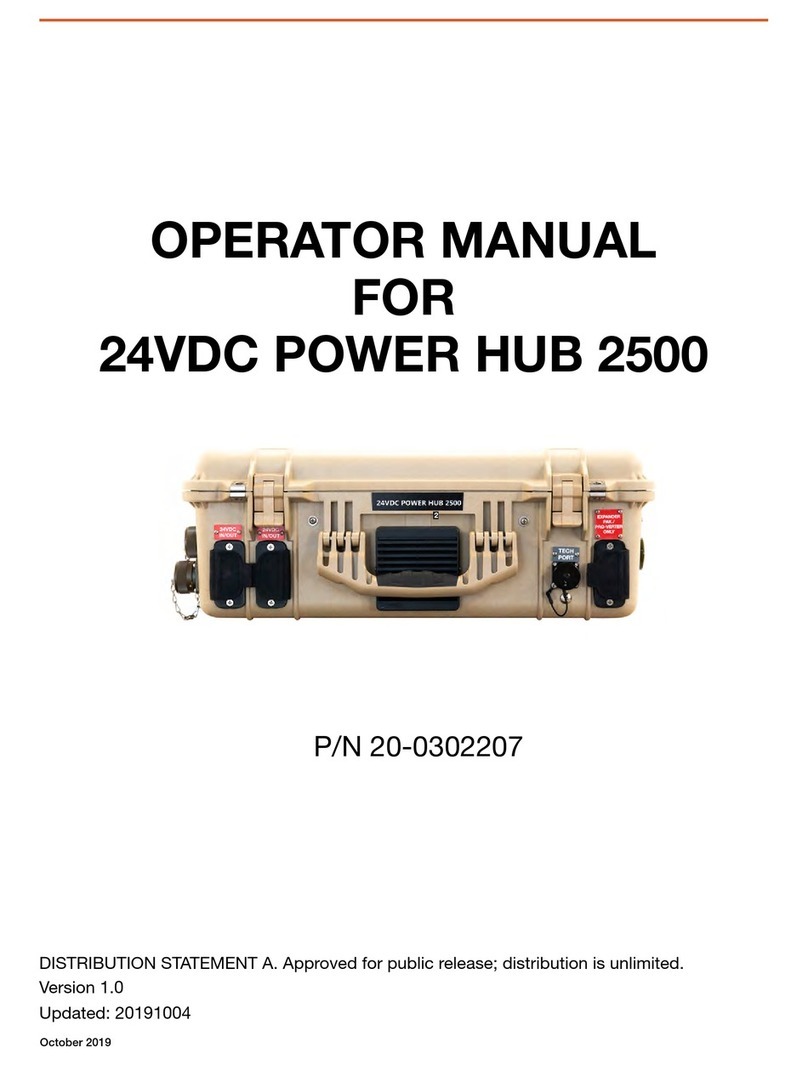
Solar Stik
Solar Stik 24VDC POWER HUB 2500 User manual

Solar Stik
Solar Stik 24VDC HyPR 3000 Installation instructions
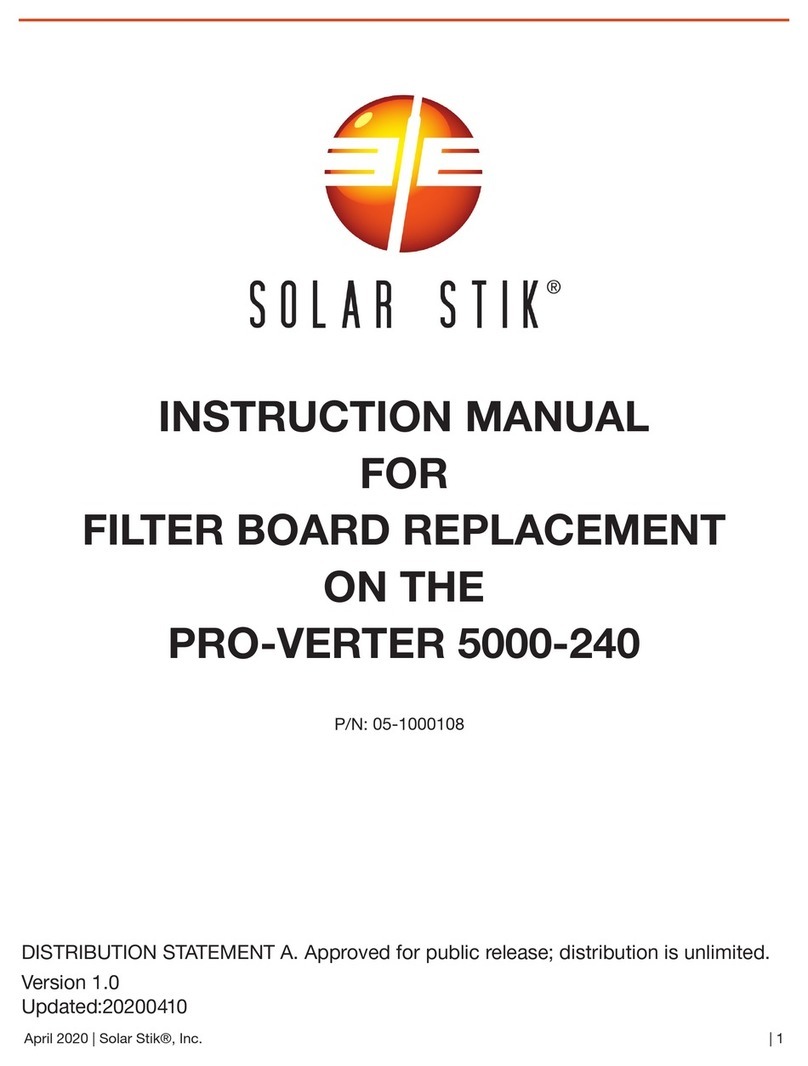
Solar Stik
Solar Stik PRO-VERTER 5000-240 User manual

Solar Stik
Solar Stik PRO-VERTER 7000-120 User manual
